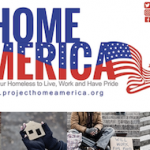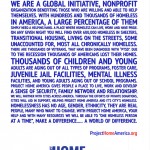
Researchers discovered that children and teenagers experiencing family homelessness are at higher risk for emotional distress, self-harm, suicidal thoughts and attempted suicide than nonhomeless youth.
“It’s important to conduct research on the health of youth who’ve experienced family homelessness because these youth and their parents have not historically been able to give voice to tell the world about themselves and what they need to thrive,” Andrew J. Barnes, MD, MPH, assistant professor and fellowship director, developmental-behavioral pediatrics, University of Minnesota, told Healio Psychiatry.
“Many people are surprised to learn that youth who are homeless with an adult family member make up almost 40% of the entire homeless population in the U.S. and represent the fastest-growing group of people who experience homelessness,” Barnes continued. “Most child health professionals have taken care of youth whose families have been homeless, but we lack scientific knowledge to guide us as we do so. And research that gives voice to this group of youth also informs teachers, policymakers, homeless advocates and families themselves.”
Researchers compared the risk of suicidality and factors that may protect against it — such as social competency, self-esteem, school connectedness, parent connectedness, empowerment and academic orientation — between family-homeless and nonhomeless children and adolescents using cross-sectional data from 62,034 youth in 8th through 12th grades. The investigators examined odds of emotional distress, self-injury, suicidal thoughts and suicide attempt in the past year among homeless and nonhomeless youth, then tested whether developmental assets changed emotional health outcomes.
Overall, 4,594 children and teenagers experienced family homelessness. Of these, 42% reported high levels of emotional distress (adjusted OR = 2; 95% CI, 1.9-2.1), 29.1% reported self-injury (aOR = 2.52; 95% CI, 2.34–2.69), 21% reported suicidal ideation (aOR = 2.3; 95% CI, 2.14–2.48) and 9.3% reported attempting suicide within the past year (aOR = 3.24; 95% CI, 2.91–3.6).
Developmental assets lowered the odds of the outcomes for all participants; however, family-homeless youth were less protected, though the differences between these groups were small to moderate. Homeless boys and girls showed significant differences in positive identity, empowerment, academic orientation and positive teacher assets. While positive identity cut the risk for attempted suicide among nonhomeless children by 82%, this risk only reduced by 72% among homeless children. Also, homeless girls with high connectiveness to their parents were less likely to have suicidal thoughts and self-harm than homeless boys with high connectiveness.
“The take-home message for clinicians is to be aware not only of the higher risks for emotional health problems, self-harm, suicidal thinking and suicide attempts in teens who’ve experienced family homelessness, but also of the many protective factors that are present in these teens’ lives that help buffer these risks including close relationships with a parent and a strong academic orientation,” Barnes told Healio Psychiatry. “At the same time, our results imply that these positive influences are stronger for youth with stable housing, so we need to ensure that our health care systems also address housing equity and other social determinants of health such as trauma and severe adversity.” – by Savannah Demko
Disclosures: The authors report no relevant financial disclosures.







